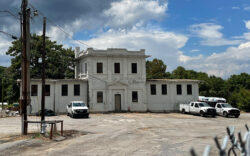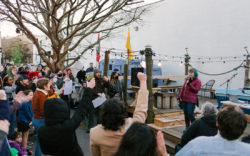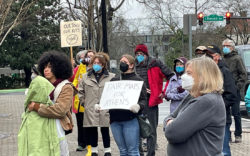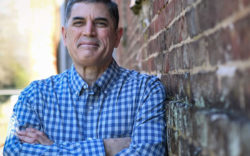One of the first impulses of Black Athenians, after they’d been freed from their enslavement, was to seek education. Part of the white savagery had been to demand illiteracy and mental confinement, in addition to physical possession and forced labor, and these newly freed Black Athenians sought what had been kept from them.
“Some men know the value of education by having it,” recalled the freed Black intellectual Frederick Douglass about his childhood in chains. “I know its value by not having it.”
For many of the enslaved in Georgia, the crime of literacy was met with brutal violence and amputations, going above and beyond the “whipping” prescribed by the state constitution for attempts at literacy. After the Civil War, the very least thing white Athens could do, after violently forcing these Athenians to build their wealth, was to allow participation in education. Instead, they beat back Black attempts to learn with the very tools of war they’d just used in their attempt to maintain slavery.
In 1867, shortly after the University of Georgia was reopened following its war-era dormancy, newly freed Black Athenians climbed the hill to the gates of the university. They “wished to have the same privileges extended to their people that were enjoyed by the white people in the University,” according to The Life of Patrick Hues Mell. The seekers of education tried at least twice to beseech Georgia’s center of learning for help, and each time they were met by armed mobs of whites.
The whites violently defended even the idea of education, embodied in the university, like a citadel. A final request by freed people to apply to the university was met by the many university students who’d been Confederate soldiers. For some time the university had been shut down due to most college-age boys having joined the army defending the slave states. Now they were back at university, still apparently with their weapons of war, and at the command of eventual university president Patrick Hues Mell. Mell, then a professor and president of the Southern Baptist Convention, lived nearby and heard the commotion. He reported that he took command of these ex-soldiers and arrayed them like a Confederate battalion, rifles trained on the hopeful students and their families, and ordered them to fire on the next advance.
“Your demand will not be respected, because this is the white man’s college, and you are perfectly powerless to help yourselves,” announced Mell to the Black families who sought entrance for their sons. “You are now surrounded by armed and determined men who are only waiting for my orders to fire into you on every side.” Mell, who’d commanded men briefly as a colonel during the war, ordered that if the crowd did not disperse, “I will command these men to fire and not one of you will leave this campus alive.”
The university campus came so very close to a bloodbath that would be in every American child’s textbook today: the Athens Massacre. But the hopeful students saw only suicide in opposing the white arms guarding education in Georgia, and they retreated. It would be nearly a century before the university would even consider permitting Black students to share in the knowledge it hoarded.
But the Black pursuit of education did not stop there. Soon, the Freedmen’s Bureau—part of the United States Army occupying Athens—would create the Knox Institute on the corner of Reese and Pope streets, where newly freed Black children were given a place to learn. Later, in 1881, Ebenezer Baptist Church West would build the Jeruel Academy a few blocks over, establishing the area west of downtown and down the hill as the center of Black education in Athens.
It would take white Athens only 10 years to decide that it wanted the nicest of the West Athens Black schools for its children, forcing the Black children out. This would be a recurring theme: white fickleness and disinterest shoving Black children from one place to another to suit white prerogatives. From the Knox Institute to Ebenezer Baptist’s school to farther down the hill traced by Broad Street, this center of Black learning west of downtown eventually solidified at the base of the hill, where today the Minor Street and Campbell Lane buildings exist as the final existing vestiges of that history.
By 1910, Black Athenians still outnumbered whites, but white children were given six schools to the Black children’s three. It should go without saying that the quality of the former exceeded the latter to a significant degree. Figures from 1916 revealed that the monthly per-pupil expenditure was $2.14 for white students and a mere 67 cents for Black children.
It was during this time, the 1910s, that Athens’ city fathers (its white fathers, rather) conceived of the idea of the Black Mammy Institute, a school that would reduce Black education, for boys as well as girls, to simply training for domestic service. The best that Black girls and boys could hope for was “such academic training as will best fit them for carrying out the main object of the school,” namely, to return them to their antebellum status as servants. The white elites of Athens celebrated the novel school, including Gov. Joseph Brown and university president David Barrow.
The whites of Athens were trendsetters with their idea to reduce Black education to one of slavery-inspired servant training. The Atlanta Constitution and its renowned publisher, Henry Grady, lavished praise on the idea, and even Good Housekeeping came to town to celebrate what white Athens had concocted. Good Housekeeping explained the problem, as they saw it: “[N]egro training schools usually have had as their aim the education of teachers and leaders,” whereas this new idea from Athens was to make children into “workers for the house and the field.”
The new school proposed for Athens rejected the “Northern” idea of full education for Black children in favor of an explicit return to slave-era training. In opposition to “the ideas of Northern educators… This new school represents the South and suggests the special training given the negroes of the old régime, by the best class of Southern slaveholders.”
During the next decade, white Athens would rediscover its Klan heritage, and by the 1920s, the city’s Ku Klux Klan would collect hundreds of members. Whatever meager progress had been seen by Black Athenians in the years after emancipation was being reversed by a snarling return of full-bore white savagery. Among the white elite of Athens and the university, one could find open advocacy for mob violence, lynching and the murderous Klan. Those same forces were actively attempting to reshape education in the city to create something of a return to the antebellum slave era.
These were the conditions in which the schools on West Broad stood as places of refuge and escape for the Black children being steered toward servitude by Athens’ whites. Every single Black child who passed through the halls of the schools of the West Broad Street campus was a defiance of that white supremacist order pursued by the powerful in Athens. Every child who learned chemistry instead of cooking or literature instead of laundry made those buildings into symbols of Black flourishing in the face of white hatred and abuse.
But virtually nothing of that story of survival and defiance remains in Athens. The Campbell Lane building on the West Broad campus, slated for destruction by the Clarke County School District, is one of the few surviving “equalization” schools. So named for the white South’s last-gasp effort to create a more convincingly equal educational system in the wake of mid-century Supreme Court cases that preceded the Brown decision, these “equalization” schools are remarkable relics of an attempt to create a sturdy apartheid system that would hopefully satisfy the scolds in the North. In Georgia and across the South, white electorates even agreed to tax hikes to ensure a durable apartheid system could be built that would survive looming Supreme Court cases. Most of these structures have been demolished or left to rot. The school on Campbell Lane remains. It presents a rare opportunity to restore a building of true historic value. To erase traces like these of Black history is to deprive white students, as well Black, of a necessary education. It is a rare thing, the school whose very presence teaches. To remove the building is the first step toward forgetting entirely.
Whether Linnentown, Lickskillet or the countless other instantiations of Black life, the essentially uninterrupted impulse in Athens has been one of erasure. We preserve what is white, and we demolish what is Black. Even the 150-year-old monument to the Confederacy was not destroyed. The names of monsters adorn the well-preserved buildings of campus. A tree is said to “own itself” and afforded more concern than generations of Black children and their hope in the face of hate. With this in mind, it seems inconceivable that one would bring a wrecking ball to a Black school of the era of Southern apartheid. These are monuments. The recklessness of the act is exceeded only by the permanence of it.
Like what you just read? Support Flagpole by making a donation today. Every dollar you give helps fund our ongoing mission to provide Athens with quality, independent journalism.










